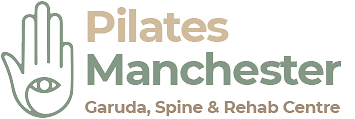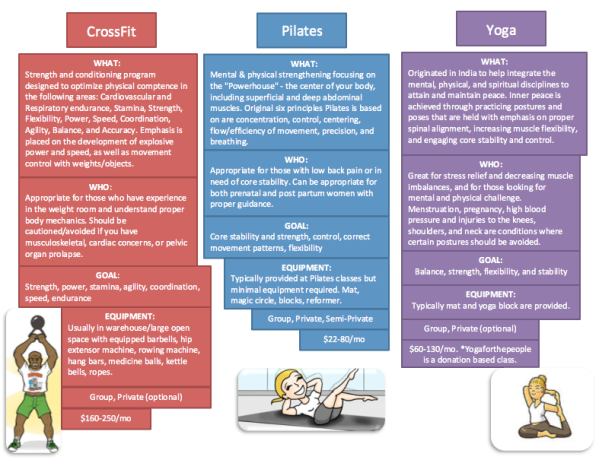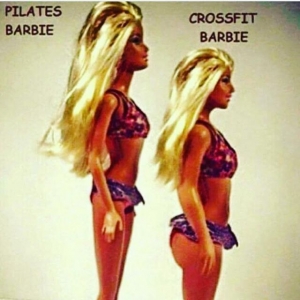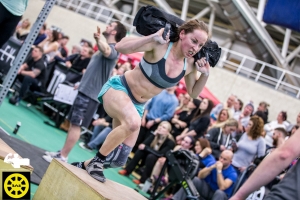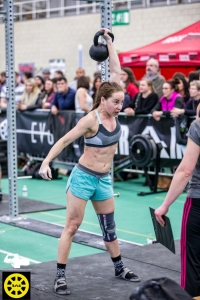Pilates for Cross Fit Manchester
To hardcore representatives of either exercise methodology, putting Pilates and Crossfit in the same sentence, let alone as part of the same exercise program, might sound inconceivable. In terms of volume, intensity, and demand on the body, these two disciplines could not be more polar-opposite from one another. But, having studied, experienced and benefited from the collaboration of both methods, I beg to differ. I believe they are more similar than different.
Both Crossfit and Pilates have their origins in gymnastics. Pilates originated in the early twentieth century by Joseph Pilates, a former gymnast and boxer. The main goal of Pilates is to return our bodies to a functional level, strengthening the muscular system from the core to the periphery, focusing mostly on the small stabilizing and postural muscles. Crossfit was founded in 1995 by Greg Glassman, a former high school gymnast. Crossfit focuses on the ten aspects of fitness: cardiovascular/respiratory endurance, stamina, strength, flexibility, power, speed, agility, balance, coordination, and accuracy. Both Crossfit and Pilates are based on functional movements and the ability to control your body under a large variety of demands leading to improved fitness and health. Both methods include many bodyweight moves such as squats, push-ups, pull-ups, and sit-ups, as well as more advanced gymnastic skills such as handstand pushups, ring dips, and back levers. The basic functional movements of pushing, pulling, squatting, lifting and rotating all require our bodies to work at optimal function, with ideal joint mobility and stability, something many of us have unlearned from years of being trapped behind desks, in cars and on couches. Both Crossfit and Pilates aim to return our bodies to that functional level, albeit by different modalities.
Crossfit, in order to be done safely and effectively, requires your body to already perform at this functional level; any dysfunction will inevitably lead to injury. Crossfit has the ability to get anyone, from aspiring athletes to housewives, into the best shape of their lives due to its high intensity, constant variety, and equal demand on all energy systems, provided the athlete is healthy, and without cardiovascular or joint impairments. Pilates is the perfect foundation and complement to Crossfit. I seem to be one of the few Fitness Professionals who is not a purist, and believe in the integration of these two conditioning methods.
Pilates not only sets the body up with an optimal foundation for Crossfit, it also enables the restoration of muscle balance and aids the recovery process. Spinal Stabilization, or Midline Stability in Crossfit terms, joint mobility and a strong back, or Posterior Chain Engagement are principal guidelines for both Pilates and Crossfit. Both methods are based on the belief that the body works as a whole, with the entire kinetic chain functioning in an integrated manner, rather than in isolation (bodybuilding). Therefore, we practice movements, dynamic flexibility, and bodyweight moves executed with minimal, basic equipment, rather than isolated exercises performed with fancy machines, which end up underutilizing the body’s stabilizers and are irrelevant to proper functioning of the kinetic chain.
Let’s take a look at two common movements of the Crossfit repertoire that can greatly benefit from the addition of Pilates: the Overhead squat and Toes-to-Bar.
Overhead squats are a common assessment for optimal kinetic chain function, requiring perfect range of motion at the ankle and hip joint, stability of the knee and lumbar spine, core strength, flexibility of the thoracic spine, and stability and strength in the shoulder girdle. Dreaded by many Crossfitters, the Overhead squat is often performed poorly with no weight, or just a PVC pipe, making it virtually impossible to execute the movement safely at prescribed weights of 65lbs – BW, depending on the WOD. Pilates can address the flexibility and stability issues in a very efficient manner, from myofascial release (releasing adhesions that have built up in the muscle), to mobilization of the compromised joints, and spinal stabilization exercises. Once the athlete has mastered the Overhead squat, Olympic lifts, such as the Clean and the Snatch, are just a matter of learning skills.
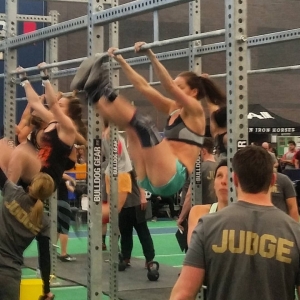 Toes–to-Bar can also greatly benefit from the addition of Pilates. Many Crossfitters compensate for lack of lumbar and hamstring mobility, as well as abdominal strength, by generating great momentum by kipping. Pilates offers countless dynamic proprioceptive neuromuscular facilitation (a combination of passive stretching and isometric contractions) type exercises that enhance altered length-tension relationships in the posterior chain. A strong core, coupled with a strong grip and adequately flexible hamstrings, will make this exercise more efficient and less taxing.
Toes–to-Bar can also greatly benefit from the addition of Pilates. Many Crossfitters compensate for lack of lumbar and hamstring mobility, as well as abdominal strength, by generating great momentum by kipping. Pilates offers countless dynamic proprioceptive neuromuscular facilitation (a combination of passive stretching and isometric contractions) type exercises that enhance altered length-tension relationships in the posterior chain. A strong core, coupled with a strong grip and adequately flexible hamstrings, will make this exercise more efficient and less taxing.
A strong, stable and mobile foundation is key for performing at your optimum athletically as well as in life, which is why it is crucial for athletes and Crossfitters to constantly assess their joints and soft tissue extensibility as well as address and correct imbalances that may be putting the athlete at risk for injury.
Dynamic flexibility, core activation, proprioception (perception of where and what your body is doing in space) and neuromuscular activation are just a few aspects that a Pilates routine can improve, which will ultimately enhance the efficiency and longevity of a Crossfit career.
